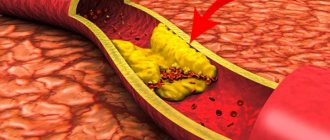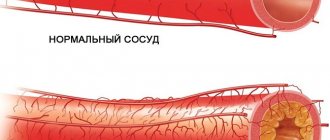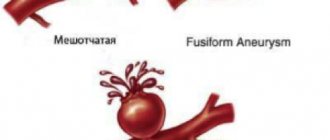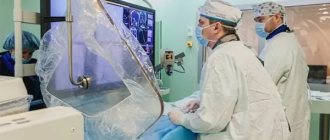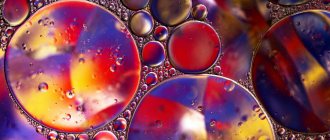: June 17, 2007, Oil: heroes of not our time, volume 15, no. 3
Cardiovascular diseases are rightly called the epidemic of the 20th century: over the past decades, they have become the main reason for the increase in mortality rates in industrialized countries, including Russia, where about 1 million 200 thousand people died from them annually. Unfortunately, at the beginning of the new century the situation has not changed much: today the cardiovascular “epidemic” continues to reap a bountiful harvest
Today in Russia, mortality from cardiovascular diseases (CVD) is 2-4 times higher than in Western European countries, the USA, Canada, Australia, and so far, unfortunately, there is a tendency for its further increase. In many economically developed countries, in the last 30 years, on the contrary, there has been a decrease in mortality from CVD. This phenomenon is primarily associated with changes in a person’s lifestyle: quitting smoking, switching to a healthy diet and higher physical activity.
CVDs typically include coronary heart disease, stroke, and peripheral arterial disease because they share common risk factors, although the importance of the latter may vary. It is worth noting that the leading role in the development of these diseases is given to atherosclerosis.
- a chronic disease in which changes occur in the walls of blood vessels and disruption of their functions, resulting in an insufficient amount of oxygen reaching tissues and organs (
ischemia
). What is the cause of this terrible disease and is it possible to fight the merciless “silent killer”?
Causes of the disease and its morphological substrate
In order for the initially smooth and dense wall of blood vessels to become a reliable container for a fatty, porridge-like substance, a chain of pathological processes is necessary:
Violation of the ratio of blood fat fractions (dyslipidemia).- “Incorrect” lipids are captured by special cells and transported into the vascular wall.
- The endothelium (the inner layer of the vessel) is damaged (during viral and bacterial infections, allergic reactions) and begins to leak blood plasma components into the wall. Proteins are the first to explore a new location, and to secure their rights to it, they bind tightly to lipids.
- Holes in the endothelium are bad. The breakdown is diagnosed by platelets and monocytes, and they stick to the damaged area.
- Monocytes take the initiative and penetrate deep into the damaged vessel wall. Entering the intima makes them macrophages (cells capable of absorption), and they actively absorb droplets of lipids.
- Macrophages are engaged in molecular synthesis: they produce chemicals that are signals for the proliferation of connective tissue fibers (the basis of a future plaque).
- The appearance of connective tissue leads to starvation and hypoxia of smooth muscle cells of the vascular wall. Therefore, vessels grow along the periphery of the plaque, the rupture of which causes complications.
Pathogenesis lasts for more than one year. The following factors can accelerate the body’s movement towards a station called “vascular atherosclerosis”:
- not subject to influence: age (45 and above for the stronger sex and 55 for the weaker), male sex (alas, it is deprived of the beneficial effects of estrogen), genetic predisposition;
If we prevent the development of the disease in ourselves, we will reduce the risk of complicated atherosclerosis in our children.
- depending on the person: smoking (the pathophysiology of nicotine is detrimental to the vascular endothelium - their inner layer that triggers the mechanism);
- arterial hypertension (the pressure of blood flow is stronger than what was calculated by nature, and the walls are mechanically damaged);
- obesity (increases the level of “wrong” blood lipids, without which atherosclerosis would not exist);
- insufficient physical activity.
What is a plaque and what does it look like?
The morphological substrate (structural basis) of the disease is the plaque. On histology it looks like a tuberous protrusion. Its size depends on the amount of lipids that get between the smooth muscle cells of the vascular wall (and they accumulate there from early childhood). Fatty patches gradually become overgrown with connective tissue and can completely stenose the lumen of the artery.
However, even before this, complications may arise that will force the patient, fearing a sentence of disability, to quit smoking and start taking medications.
Atherosclerosis is inherited
The importance of hereditary factors in the occurrence of atherosclerosis has been analyzed by many researchers. There is a lot of evidence that members of families belonging to the same surname have similar negative changes in fat metabolism, making them more likely to develop atherosclerosis than those who are not related by blood. In addition, close relatives show similarities in the location of atherosclerotic lesions in the coronary or cerebral vessels. It has also been established that an in-depth study of young, clinically healthy individuals, but with a burdened heredity, reveals a pronounced tendency to increase cholesterol levels and some other metabolic changes, which indicate the presence of atherosclerotic processes.
And yet: what is the mechanism for the implementation of such family-hereditary prerequisites for the development of atherosclerosis? It is obvious that the type of response of the body to the action of environmental factors is inherited. And the reason, presumably, is the unusually rapid changes in the living conditions of modern man, excessive loads on the adaptive, in particular nervous, endocrine and cardiovascular systems of the body, which lead to disruptions in their work, causing the development of atherosclerosis.
Today, a connection has been established between the frequency of certain mutations in genes that control the production of anti-sclerotic inflammatory lipoproteins, as well as nitric oxide, and the likelihood of a patient developing atherosclerosis of various localizations. In particular, people with a number of gene mutations in the enzyme endothelial NO synthase have a higher incidence of angina, myocardial infarction and arterial hypertension than healthy people.
Patients with mutations in the genes of the blood hemostasis system are more likely to experience thrombosis due to acute complications of atherosclerosis, which makes the identification and study of gene polymorphisms in patients with atherosclerosis extremely promising. In particular, in the Department of New Medical Technologies of the Institute of Chemical Biology and Fundamental Medicine of the Siberian Branch of the Russian Academy of Sciences (Novosibirsk), where fundamental aspects of atherosclerosis are studied, data have been accumulated on frequently occurring mutations in the system of genes that control thrombus formation. It has also been found that people who carry one of the alleles (E4) of the APOE gene, which encodes the protein component of some plasma lipoproteins, have an increased risk of cardiovascular diseases. Carriers of this gene isoform have elevated levels of both total and LDL cholesterol, which is in good agreement with the data available in the medical literature.
With the help of multidisciplinary, including genetic, examination (detection of mutations in the apolipoprotein system, in the system regulating the production of nitric oxide), today it is possible to develop individual treatment regimens for patients with various manifestations of atherosclerosis, in order to timely and differentiatedly correct this pathological condition already at the earliest stages of the development of the process.
Classifications of the disease, its types and stages
Morphological classification of stages of atherosclerosis
| Stage | Type of microslide |
| Pre-lipid | Drops of fat appear in the intima (inner layer of the vessel) |
| Lipoidosis | The upper layer of the artery is in some places saturated with lipids and proteins, it looks like greasy spots and streaks |
| Liposclerosis | Connective tissue grows around the focus of lipid-protein infiltration |
| Atheromatosis | The middle of the plaque completely loses its integrity and takes on the appearance of a “mush.” Due to the destruction of microvessels that have grown around, hemorrhages occur into the thickness of the deposits |
| Ulceration | A relatively smooth covering formed on the surface of the plaque breaks off, leaving an ulcer crater |
| Atherocalcinosis | Final infiltration of the plaque with calcium salts |
Surgical stages of atherosclerosis:
| № | Stage | The degree of overlap of the vessel lumen |
| 1 | Hemodynamically insignificant | Less than 50% |
| 2 | Stenosis | 50-70% |
| 3 | Obturation | More than 70% |
Based on the coverage of the affected vessels, the following are distinguished:
- generalized atherosclerosis;
- multifocal;
- atherosclerosis of peripheral arteries (obliterating);
- damage to the great vessels.
Clinical and morphological forms of the atherosclerotic process
| Form | Location of the lesion |
| Atherosclerosis of the aorta | Aorta, usually the abdominal region |
| Cardiac (ischemic atherosclerosis) | Coronary vessels, valves |
| Renal | Kidney arteries |
| Brain (cerebral) | Intracranial vessels |
| Intestinal | Mesenteric arteries |
| Atherosclerosis of the arteries of the lower extremities | Femoral arteries |
| Atherosclerosis of brachiocephalic vessels (BCV) | Right carotid, vertebral (in extracranial areas) and subclavian arteries |
There is no such thing as venous atherosclerosis. This is due to the structure of the vessel wall being different from the arterial one and the much calmer flow of blood.
Atherosclerotic vein damage is possible only after coronary artery bypass surgery. In this case, the vessel appears in the place of the artery and resists the turbulent (with turbulence, strong) blood flow, and microdamage to its intima allows lipids to implant.
Is cholesterol to blame?
Currently, a popular theory is that atherosclerosis is considered a reaction to damage to the vascular wall, with cholesterol, a fat-soluble substance belonging to the class of steroids, which is present in all tissues of the animal body, acting as the most important damaging factor.
At the end of the last century, it was discovered that in areas of atherosclerotic damage to the vessel wall, the concentration of cholesterol doubles compared to the norm. It was experimentally possible to show that the addition of this substance to the diet of rabbits leads to the formation of aortic lesions reminiscent of atherosclerotic lesions of human blood vessels.
This is how the infiltration theory of the origin of atherosclerosis was formulated. Its essence boils down to the fact that the main point in this disease is the primary cholesterol infiltration of the inner lining of the arteries - lipoidosis - with the subsequent development of connective tissue (sclerosis).
Cholesterol circulates in the blood in the form of protein-lipid complexes, which include triglycerides, phospholipids and proteins. The two main cholesterol-carrying classes are the so-called low-density lipoproteins
(LDL) and
high-density lipoprotein
(HDL) - perform different functions. The former interact with specific receptors on cell membranes, resulting in the transport of cholesterol into the cells of peripheral tissues. The latter, on the contrary, upon contact with cell membranes are able to “take” excess cholesterol from them and transport it back to the liver, where cholesterol is destroyed to form bile acids.
In patients with atherosclerosis, the concentration and residence time of low-density lipoproteins in the blood plasma increases, while some of these lipoproteins undergo peroxidation, becoming especially dangerous. The latter have a direct damaging effect, causing destruction of the endothelium of the vascular wall, and interact with blood clotting factors, promoting thrombus formation.
These data are consistent with the results of numerous epidemiological studies, according to which the level of cholesterol contained in high-density lipoproteins is inversely related to the presence of coronary heart disease, which can be used to identify the risk of its development.
Due to the importance that is nowadays attached to vulnerable (yellow) plaques in the development of acute coronary syndrome, the prevention of their formation can be considered as the main goal of treatment in primary, and especially in secondary prevention of coronary heart disease. Therapy with statins, drugs that lower cholesterol levels in the blood, can stabilize an atherosclerotic plaque, that is, strengthen its capsule and reduce the likelihood of rupture.
Experience with the use of such drugs shows that in many cases, a beneficial effect from the treatment of patients is observed already in the first weeks, when there is still no question of the reverse development of atherosclerotic lesions. This is primarily due to the fact that reducing cholesterol levels in the blood leads to improved vascular function, normalization of the blood coagulation system and restoration of the formation of nitric oxide (NO), suppressed during hypercholesterolemia. Reducing the level of cholesterol in the blood allows you to restore the ability of arteries to expand under the influence of biologically active substances.
How does atherosclerosis manifest itself and what are its symptoms?
Atherosclerosis affects arteries of the muscular and muscular-elastic type. They are located in all significant organs of the human body. Therefore, the symptoms of atherosclerosis can manifest as a pathology of almost any body system. The most common:
coronary heart disease (angina pectoris, acute myocardial infarction);- arrhythmias and conduction disorders;
- acute (stroke, transient ischemic attacks) or chronic disorders of cerebral blood flow);
- thrombosis of mesenteric vessels (paroxysmal abdominal pain);
- aortic aneurysm;
- gangrene of the limbs.
Initial signs of the disease
The picture of the disease depends on which organ the vessels are most affected. The following symptoms are possible:
- premature skin aging;
- tortuous course of the arteries, uneven compaction of their walls when palpated;
- different pulse filling on the left and right arms;
- dizziness and short-term loss of consciousness, tinnitus;
- palpitations accompanied by shortness of breath;
- retrosternal compressive pain;
- increased systolic and decreased diastolic pressure;
- attacks of pain in the upper and middle abdomen, which are accompanied by increased gas formation and constipation;
- diabetes;
- feeling of numbness in the skin of the legs and crawling;
- pain in the leg muscles when walking, which goes away after several stops.
Plaques in blood vessels. Lymphologist's View | Part 1
Good afternoon. We hope that the coronavirus situation will soon subside and we will return to normal. Today we will talk about atherosclerosis and cholesterol plaques.
It's no secret that diseases of the cardiovascular system are the main cause of death - in 50% of cases, according to international statistics. These diseases mainly include heart attacks and strokes. They have a common reason for their development. The name of this cause is atherosclerosis.
Table of contents
- What is atherosclerosis?
- How is an atherosclerotic plaque formed?
- Where can atherosclerosis develop?
- Lymphatec approach to the treatment of atherosclerosis
- Video performances
What is atherosclerosis?
Atherosclerosis is a multifactorial disease. Accompanied by pathologies of the arteries of our organs. Lipid and protein substances accumulate on the vessel wall. Then they grow with connective tissue and even become calcified. As a result, the vessel narrows and blood flow is disrupted. Due to poor circulation, organs suffer.
A lot of attention is paid to bad cholesterol. It is believed that this is what causes the plaques to appear. Is this true and should we be afraid of cholesterol? Cholesterol is used as a building material for every cell in our body. And the brain generally consists of cholesterol for the most part. Regardless of whether we eat foods high in cholesterol or not, cholesterol is always present in the lumen of blood vessels.
Atherosclerosis is believed to be an age-related disease. But the trouble is that it is a silent disease. At the initial stages it is asymptomatic. This can go on for many years. As it progresses, it can cause a number of completely different symptoms and ultimately leads to serious consequences: myocardial infarction or stroke. It is clear that when it comes to the blood vessels of the brain or heart, atherosclerosis manifests itself more clearly.
It is very important to understand that atherosclerosis is not characterized by the appearance of one plaque in one place. This is a systemic disease.
How is an atherosclerotic plaque formed?
The first picture shows the structure of the artery in cross section. The inner lining of the vessel (endothelium) consists of endothelial cells that fit tightly together and line the entire inner surface. Next is the middle shell, which consists of either elastic fibers or muscle fibers. And finally, the loose outer shell (adventitia).
Figure 1. Cross-sectional structure of the vessel. Normal state of the interstitium.
What happens during the development of atherosclerosis? The internal junction of endothelial cells is disrupted, and gaps appear in the inner wall of the vessel. We remember that cholesterol is always present in the lumen of the vessel. You already guessed what happens next: cholesterol rushes into the gaps in the endothelium as a building material. Calcium salts can join cholesterol, it begins to become overgrown with connective tissue, and can calcify. And his growth doesn't stop there. Plaques grow, blocking the lumen of the vessel more and more.
Figure 2. Disruption of interstitial structure. The appearance of an atherosclerotic plaque.
For the normal functioning of a large vessel, each level of its wall must be both supplied with blood through small blood vessels and drained through lymphatic vessels. It is these small lymphatic vessels that drain the entire thickness of the artery wall, and they remove everything pathological to larger lymphatic collectors and further to the lymph nodes.
Figure 3. Blood supply to the vessel wall and drainage through the lymphatic system.
Once the lymphatic system stops draining the artery wall, plaque begins to grow. Thus, atherosclerosis is not a cholesterol problem, but a problem of disruption of the lymphatic system, which stops draining the vessel and the plaque grows.
Where can atherosclerosis develop?
Everyone knows the pathologies of the organs of the head and neck, which are supplied with blood in the carotid artery basin. Most often, we observe the occurrence of plaques in this region: in the common, internal and external carotid arteries. And through this blood line, the brain, visual organs, thyroid gland and others are supplied with blood. A catastrophe can develop in the vessels of the heart, in any artery of this pool. Finally, very often we observe the development of atherosclerosis in various places in the blood vessels of the lower extremities.
At first we see mild symptoms. If we are talking about the head and neck, it could be noise in the head, dizziness, headaches. Atherosclerosis of the coronary arteries can manifest as coronary heart disease. Sharp pain occurs in the lower extremities when walking or exercising. There is a need to stop and wait.
Lymphatec approach to the treatment of atherosclerosis
We have a solution to treat this disease even in the early stages, without waiting for the plaque to grow. We can influence the lymphatic system so that it drains the vessel walls and removes atherosclerotic plaques.
Let us give an example of two similar clinical cases in our clinic. Both patients with obliterative, i.e. advanced atherosclerosis of the lower extremities. The surgeon's view: both patients require urgent amputation. One patient was 60 years old, the second was 80.
The second patient agreed to our treatment. He passed away at the age of 92, and he lived with his leg for 12 years thanks to our treatment technology.
Another patient agreed to amputation. Today we continue to accept patients for treatment after a preliminary analysis of the situation.
You can learn about treatment cases from our articles.
- Atherosclerosis of leg vessels. Case of Yuri's treatment
- Atherosclerosis of the vessels of the neck and heart. Analysis of Valery's treatment.
Video performances
And finally, remember that atherosclerosis is a silent, asymptomatic disease. Please, if you are over 40, take care of your health. Carry out an ultrasound examination of the blood vessels, primarily the neck and legs. If necessary, conduct a study of the heart vessels. Today all research methods are available. And if you or your loved ones already have a health problem such as atherosclerosis, do not ignore it.
LEARN ABOUT TREATMENT POSSIBILITIES
Friends, follow us on Instagram, Facebook and Youtube. New patient stories, webinars from Clinic doctors every week.
What examinations should the patient undergo and how to diagnose the disease?
The atherosclerotic etiology of organ dysfunction will be directly indicated by:
- presence of risk factors;
- biochemical blood test, lipid profile (increased levels of cholesterol, triglycerides, low and very low density lipoproteins, decreased amount of high density lipoproteins);
When establishing the degree of damage to a certain organ, instrumental examinations should be carried out:
sonography, Doppler study (visualization of changes in tissue using ultrasound);- angiography (X-ray contrast will help detect irregularities in plaques on the inner surface of blood vessels);
- spiral computed tomography with contrast (“gold standard” for diagnosing pathology of cerebral vessels and parenchymal organs);
- electrocardiography.
Consequences of atherosclerosis
Since atherosclerosis is based on a disorder of lipid (fat) metabolism in the body, leading to damage to the walls of blood vessels, the disease can contribute to partial or complete disruption of the functions of any organ. The consequences of atherosclerosis can pose a serious danger to human health and life. The main possible complications include the following.
Coronary heart disease. Atherosclerosis can lead to the development of heart rhythm disturbances, angina pectoris, myocardial infarction and sudden cardiac arrest, since the narrowing of the coronary vessels leads to the fact that the heart muscle does not receive enough oxygen, and the heart, compensating for its deficiency, strengthens its work.
Brain dysfunction. Without treatment, cerebral atherosclerosis can lead to deterioration of blood supply to the brain and, as a result, stroke, paralysis, systematic headaches, dizziness, visual and hearing disorders, swallowing and speech disorders, etc. Deterioration of blood circulation in the tissues of the eyes leads to a gradual decrease in visual acuity, which cannot be compensated. Therefore, it is important to pay timely attention to the treatment of cerebral atherosclerosis.
Thrombosis of the mesenteric arteries. Atherosclerosis can provoke acute blockage of the arteries that supply blood to the intestines, as evidenced by severe abdominal pain.
Shriveled kidney. Lack of oxygen in the tissues can lead to the gradual destruction of the kidney tissue, in its place connective scar tissue forms. The kidney decreases in size and partially loses its functions.
Who to contact and how to treat?
The initial manifestations of atherosclerosis are nonspecific, and if they force the average person to see a doctor, it will be a local therapist or family doctor. The specialist will evaluate the symptoms, analyze risk factors, and draw conclusions regarding the lipid spectrum of the blood. Additional studies may be required to determine prognosis.
Prescribed prescriptions will include dietary and treatment recommendations.
Principles of drug therapy
Treatment is aimed at:
- reducing the level of cholesterol synthesis (taking statins, fibrates);
- decreased absorption of fats from food (cholesterol absorption inhibitors, bile acid sequestrants);
- prevention of thromboembolic complications (antiplatelet agents, blood thinning drugs);
- relief of symptoms (painkillers, antispasmodics).
Taking folk remedies (such as garlic or lemon) will not help clear plaques. The bitterness will remain in the stomach and will not have any effect on the blood vessels. However, a healthy diet significantly slows the progression of atherosclerosis.
In what cases is surgical treatment resorted to?
Surgical treatment of atherosclerosis must be carried out if there is a third stage of vessel narrowing. There are such methods of intervention:
- balloon angioplasty (the lumen of the artery is restored by inflating a balloon inside it, while the atherosclerotic plaque is evenly “smeared” over the walls; after the manipulation is completed, it is removed);
- stenting of arteries (a thin lattice cylinder is inserted into the vessel, it is opened at the site of narrowing, it straightens and presses the plaque to the wall, and then gradually grows into the endothelium of the vessel).
Can atherosclerosis be cured?
Atherosclerotic plaques are only a manifestation of global changes in the body. Modern therapy can prevent complications, alleviate symptoms and prolong the patient’s life, but it is impossible to obtain a cure once and for all.
Atherosclerosis of neck vessels (carotid arteries)
28.09.2018
It is difficult to overestimate the importance of the cervical arteries in the processes of blood supply to our brain . A disease such as atherosclerosis , which affects the arteries in the cervical region, increases the likelihood of ischemic stroke. The main artery in the neck is the common carotid artery , which arises from the brachiocephalic trunk on the right side and from the aortic arch on the left. At the level of the thyroid cartilage it divides into the external and internal carotid arteries . Further, the arteries continue to divide into branches, which branch into all parts of the human head. The internal carotid artery provides blood supply to the brain and eyes , and all other parts of the head are supplied by the external carotid artery , this happens through its (external carotid artery ) branching into small arteries .
Among the causes and factors accompanying the development of atherosclerosis, the following should be highlighted:
- high blood pressure;
- metabolic syndrome;
- obesity;
- smoking;
- genetic predisposition;
- age-related changes and characteristic gender differences;
- sedentary lifestyle;
- regular psycho-emotional disorders.
The formation of sclerotic plaques leads to vasoconstriction and , accordingly, to insufficient oxygen and microelements supply to human tissues and organs. Symptoms of the disease increase quite quickly after manifestation.
Symptoms of the disease include:
- pressing headaches of varying intensity and frequency;
- dizziness ; _
- increased fatigue under moderate loads;
- blurred vision ;
- sleep disorders.
As the pathology develops, the symptoms become more pronounced and intensify. Atherosclerosis of the carotid arteries can provoke serious pathologies of the brain , among which it is worth highlighting ischemic stroke.
Among the prerequisites for ischemic stroke, special attention should be paid to the characteristic manifestations of dizziness with episodic loss of consciousness, transistor ischemic attacks accompanied by hallucinations, pronounced convulsive syndrome, paresthesia in the upper extremities, depressive states, partial loss of speech skills, weakening of visual , up to complete blindness.
It hardly needs saying that the manifestation of symptoms of atherosclerosis should be a reason to immediately consult a doctor . After examining the patient, the doctor will definitely refer him for a number of general tests and specialized diagnostics. Among the most informative diagnostic studies for suspected atherosclerosis of the carotid arteries , it is necessary to highlight duplex ultrasound scanning, multispiral computed tomography, magnetic resonance contrast diagnostics, and angiography. The interpretation of the results of tests and instrumental diagnostics is carried out directly by the attending physician treatment tactics , taking into account not only the results obtained, but also the individual characteristics of the patient’s body. The main goals atherosclerosis therapy are restoration of cerebral circulation and elimination of stenosis (narrowing) of the arteries .
Treatment of atherosclerosis of the carotid arteries at Premium Clinic Khimki
Treatment of atherosclerosis of the carotid arteries is carried out comprehensively and strictly under the supervision of a doctor . As measures accompanying treatment, it is necessary to completely stop smoking, limit or completely eliminate a number of foods and dishes from your diet, regularly monitor blood pressure and blood sugar , and perform therapeutic exercises under the guidance of an instructor.
Published in Cardiology Premium Clinic
What are the most common complications and consequences?
Atherosclerosis is dangerous due to the development of such conditions:
gangrene of the intestines and limbs;- ischemic colitis;
- aneurysm (protrusion of the wall) of the aorta;
- myocardial infarction;
- focal dystrophy of the heart muscle;
- myocardiosclerosis;
- coronary sclerosis;
- secondary arterial hypertension;
- ischemic infarction, hemorrhagic stroke;
- atherosclerotic dementia;
- amyotrophy.
conclusions
The most effective methods of treating atherosclerosis involve preventive measures:
- fight the cause (normalize the lipid profile through lifestyle changes and medication);
- if there are signs of ischemic syndrome, do not sit waiting for amputation, but undergo surgery for a favorable outcome.
The clinical symptoms of atherosclerosis will not be bothersome in old age if, in the early stages of the disease, macrophages of the vascular wall are given a chance to utilize all lipids. And they will be able to “eat all the porridge” if a person leads a healthy lifestyle.

